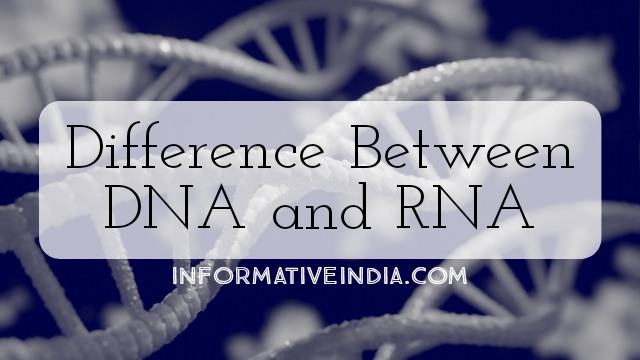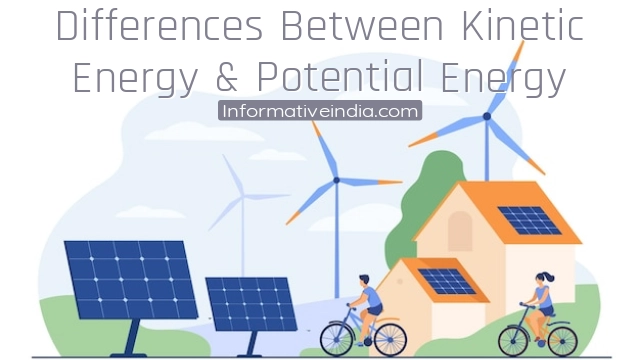Differences Between DNA and RNA
D.N.A. : Deoxyribose Nucleic Acid is its full form. It is nucleic acid which is present in chromosomes.
It is a big molecules consisting of large number of small nucleotides. The molecules are long and coiled in shape. D.N.A. molecules carries the Genetic Character of a living being to the next generation.
RNA : Its full form is Ribonucleic Acid. It is also a big molecules but smaller than D.N.A.
It is also a nucleic acid. It is originated by D.N.A. in the Nuclei. It is made of multi-nucleotides. Ribose are present in R.N.A.
- Read Also : What is Green House Effect?
It is also found in cytoplasm. In fact D.N.A. and R.N.A. are closely related in the cell. R.N.A. transmit the hereditary features from one generation to another. In case of viruses having no DNA molecules.
Differences Between DNA and RNA —
| DNA (Deoxyribose Nucleic Acid) | RNA (Ribonucleic Acid) |
| 1. DNA is the Usual genetic material. | 1. RNA is the genetic material of some viruses. |
| 2. DNA usually double standard. | 2. Most cellular RNA is single standard. |
| 3. The pentose sugar is deoxyribose. | 3. The pentose sugar is ribose. |
| 4. The common organic bases are adenine, guanine, cytosine and thymine. | 4. The common organic bases are adenine, guanine, cytosine and uracil. |
| 5. Base pairing adenine pairs with thymine and guanine with cytosine. | 5. Adenine pairs with uracil and guanine with cytosine. |
| 6. Pairing of bases is throughout the length of the molecule. | 6. Pairing of bases is only in the helical region. |
| 7. There are fewer un-common bases. | 7. There are more un-common bases. |
| 8. DNA is only of one type. | 8. There are three types of RNA messenger ribosomal and transfer RNA. |
| 9. Most of DNA is found in the chromosomes. Some DNA is also found in the cytoplasm. e.g. In mitochondria and chloroplasts. |
9. Messenger RNA is formed on the chromosomes and is found in the nucleus and cytoplasm. rRNA and tRNA are also formed on the chromosomes and are found in cytoplasm. |
| 10. Denaturation (melting) is partially reversible only under certain conditions of slow cooling (renaturation). | 10. Complete and practically instantaneous reversibility of the process of melting. |
| 11. Sharp, narrow temperature interval of transition in melting. | 11. Broad temperature interval of transition in melting. |
| 12. DNA on replication forms DNA and on transcription forms RNA. | 12. Usually, RNA does not replicate or transcribe (In certain viruses RNA can synthesize and RNA chain). |
| 13. Genetic messages are usually coded in DNA. | 13. The usual function of RNA is translating messages coded in DNA into proteins. |
| 14. DNA consists of large number of nucleotides up to 4.3 million. | 14. RNA consists of fewer nucleotides up to 12,000. |
You May Like —
- What are the Fertilizers and It’s Types?
- What is Pollution? Explain the Pollutants Air, Water and Soil
- What Do You Mean by Atom Bomb, Hydrogen Bomb and Neutron Bomb
- Explain the Term Genetic Engineering. What are It’s Uses?
- Why is the Conservation of Forests, Wild Life, Soil and Water Essential?
- Write a Short Note on Vascular System of Heart.
- What is Energy? And Sources Or Importance of Energy.
- What is Transistor? Describe the Types of Transistor and Working of Junction Transistor.
- What Do You Mean By Environment and Conservation?




